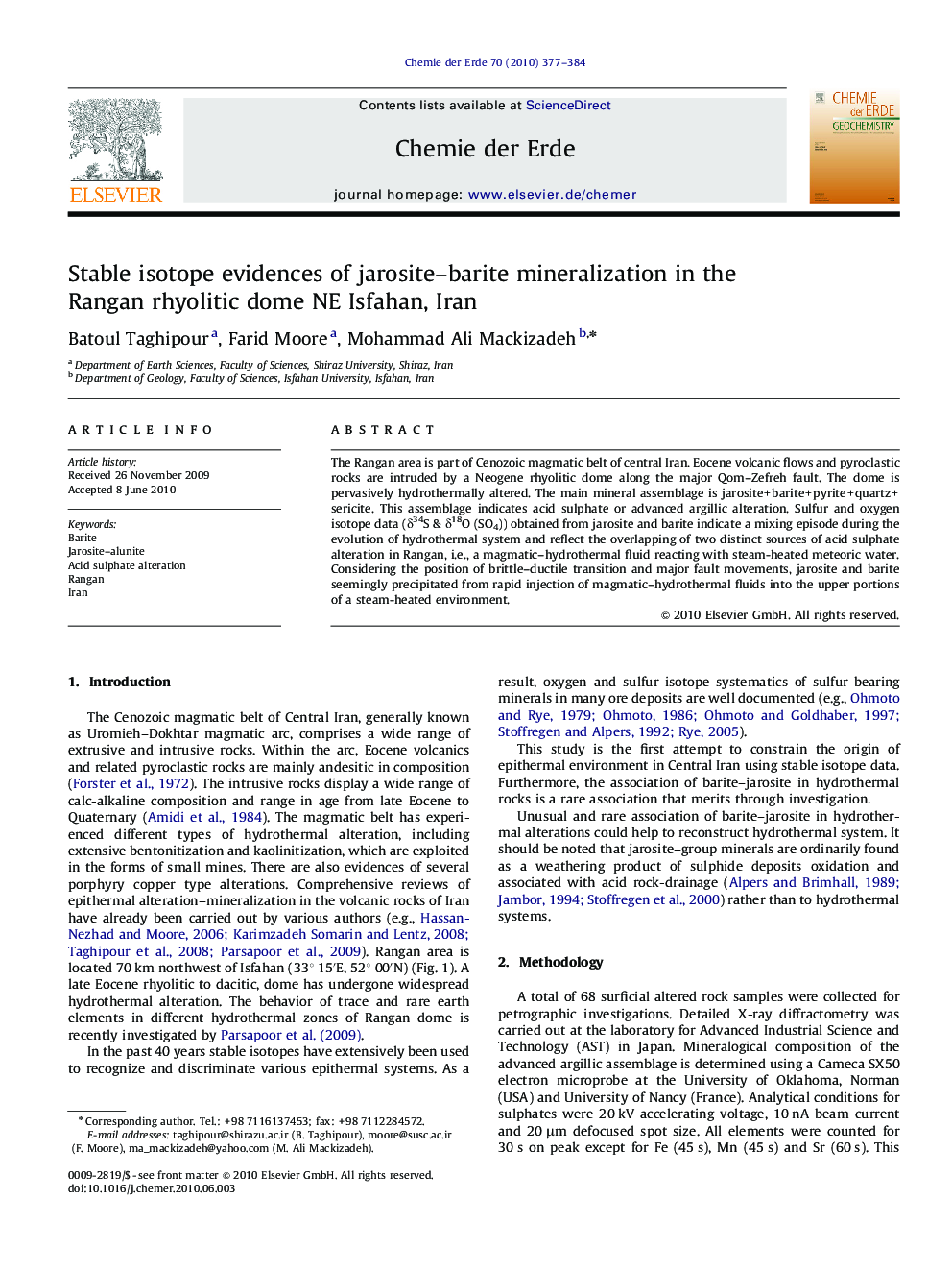| Article ID | Journal | Published Year | Pages | File Type |
|---|---|---|---|---|
| 4407030 | Chemie der Erde - Geochemistry | 2010 | 8 Pages |
The Rangan area is part of Cenozoic magmatic belt of central Iran. Eocene volcanic flows and pyroclastic rocks are intruded by a Neogene rhyolitic dome along the major Qom–Zefreh fault. The dome is pervasively hydrothermally altered. The main mineral assemblage is jarosite+barite+pyrite+quartz+sericite. This assemblage indicates acid sulphate or advanced argillic alteration. Sulfur and oxygen isotope data (δ34S & δ18O (SO4)) obtained from jarosite and barite indicate a mixing episode during the evolution of hydrothermal system and reflect the overlapping of two distinct sources of acid sulphate alteration in Rangan, i.e., a magmatic–hydrothermal fluid reacting with steam-heated meteoric water. Considering the position of brittle–ductile transition and major fault movements, jarosite and barite seemingly precipitated from rapid injection of magmatic–hydrothermal fluids into the upper portions of a steam-heated environment.
